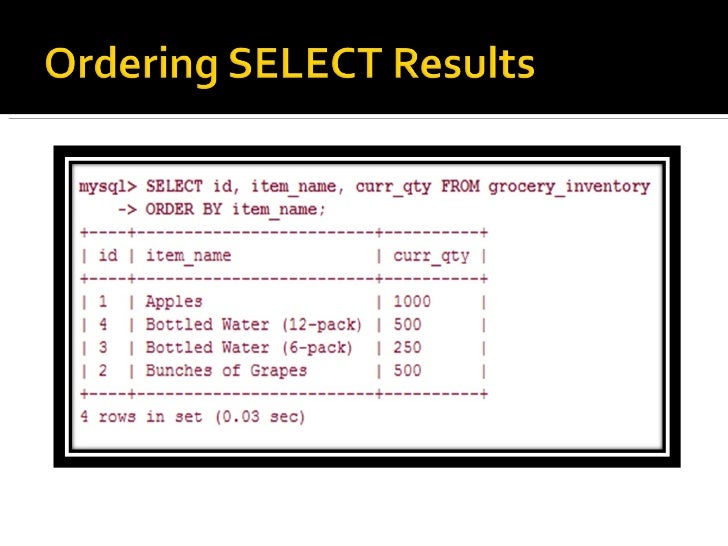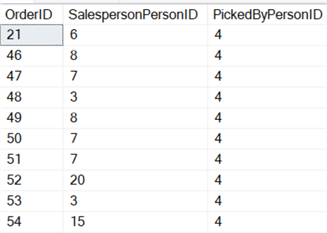

However, NOT IN behaves very differently. If you have a NULL value in the result of the subquery, or expression, that is passed to the IN logical operator, it will give a reasonable response, and the same as the equivalent EXISTS. There is a certain unreality in comparing sets with null values in them, but if it happens in the heat of everyday database reporting, things can go very wrong.
#Sql not equal to multiple values full#
The two FULL OUTER JOIN queries were a bit slower, but it was a close race. The INTERSECT and INNER JOIN queries both used an inner merge join, and were close. We’ll check for variation by running the test several times. In fact, the first four all use the exact same ‘right anti semi merge join’ execution plan, and all take the same amount of time. However elegant your SQL, the optimizer merely shrugs and comes up with an efficient plan to execute it.
#Sql not equal to multiple values code#
How many words occur in Dracula that aren’t common words? Assuming there are no NULL values in the CommonWords.Word column (more on this later), then the following queries will return the same result (1555 words), and have the same execution plan, which uses a Merge Join (Right Anti Semi Join) between the two tables.Īll nine queries give the same results, but does any one approach perform better? Let’s put them all in a simple test harness to see how long each version takes! Again, the code download file includes the test harness code, and all nine queries.Īs the results show, although the queries look rather different, it’s generally just ‘syntactic sugar’ to the optimizer. It is useful, generally, to have tables like these in your sandbox server, for running tests while doing development work, though the book you use is your choice! We can use the LIKE operator with multiple string patterns using the OR. The TestExistsAndIn download includes the script to create these two tables and populate each one from its associated text file. The SQL LIKE operator is used with the WHERE clause to check if a value matches. Imagine that we have two simple tables, one with all the common words in the English language ( CommonWords), and the other with a list of all the words in Bram Stoker’s ‘Dracula’ ( WordsInDracula). There are many ways of working out the differences between two data sets, but two of the most common are to use either the EXISTS or the IN logical operator.

If so, you should consider using a NOT EXISTS operator instead of NOT IN, or recast the statement as a left outer join.Ī recommendation to prefer use of EXISTS over IN is included as a code analysis rule in SQL Prompt ( PE019). Nevertheless, you need to be cautious when using the NOT IN operator if the subquery’s source data contains NULL values.

However, the query optimizer now treats EXISTS and IN the same way, whenever it can, so you’re unlikely to see any significant performance differences. For example, in cases where the query had to perform a certain task, but only if the subquery returned any rows, then when evaluating WHERE EXISTS (subquery), the database engine could quit searching as soon as it had found just one row, whereas WHERE IN (subquery) would always collect all the results from the sub-query, before further processing. It used to be that the EXISTS logical operator was faster than IN, when comparing data sets using a subquery. He is a regular contributor to Simple Talk and SQLServerCentral. Phil Factor (real name withheld to protect the guilty), aka Database Mole, has 30 years of experience with database-intensive applications.ĭespite having once been shouted at by a furious Bill Gates at an exhibition in the early 1980s, he has remained resolutely anonymous throughout his career. Likewise, we can check if a value is not equal to another by adding a ! before the =. Equal or does not equal EqualĬheck if income is exactly equal to expenses. If income is less than expenses, the result of the formula will be a 1, and if not, a 0. Now, check if income is less than expenses. OperatorsĬompare if one number is greater than anotherĬompare if one number is greater than or equal to another

See the operators listed below for an introduction to their symbols and usage. Logical operators allow you to compare values in one field to another (or multiple fields to multiple others!).


 0 kommentar(er)
0 kommentar(er)
